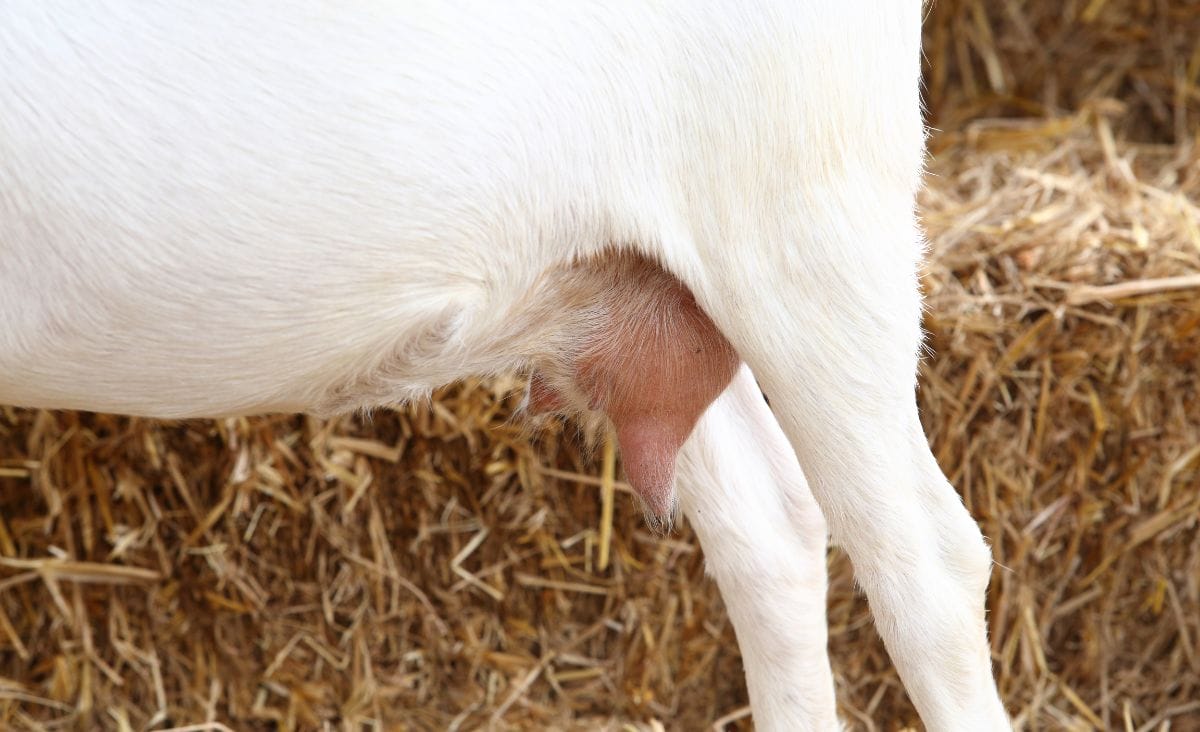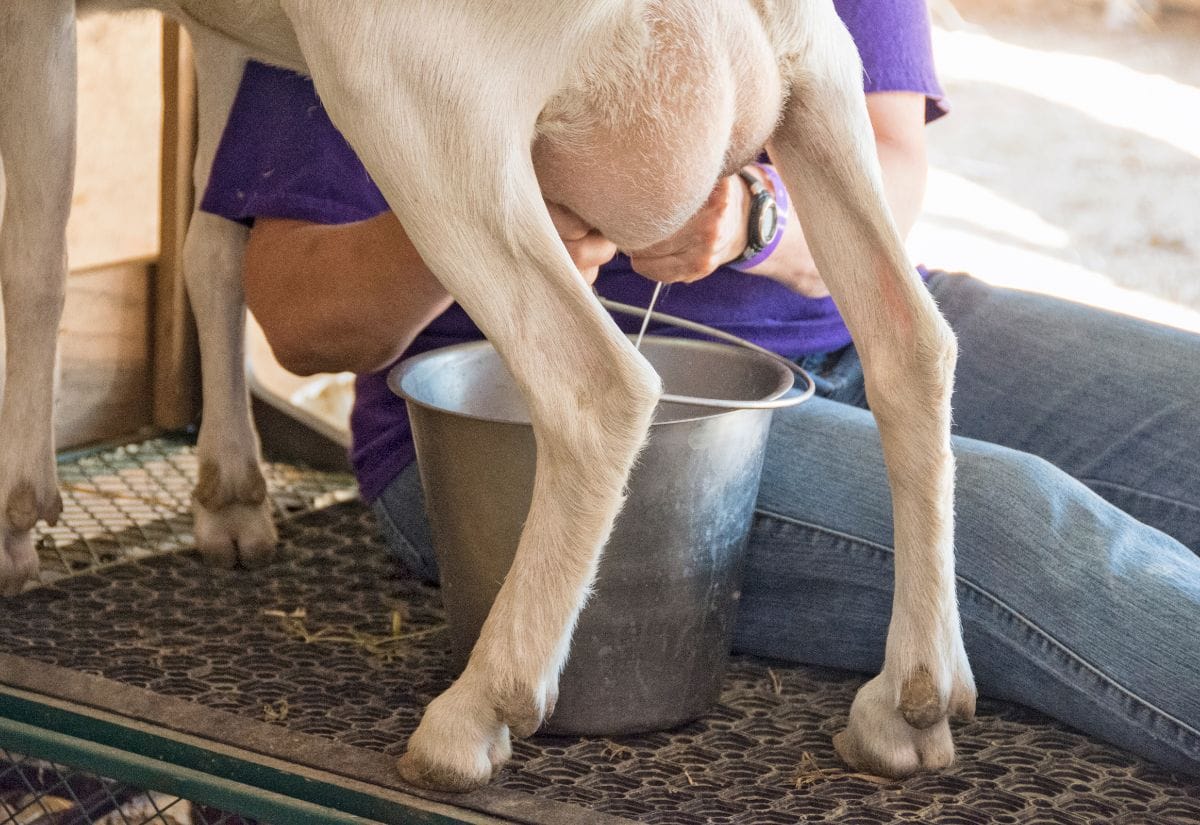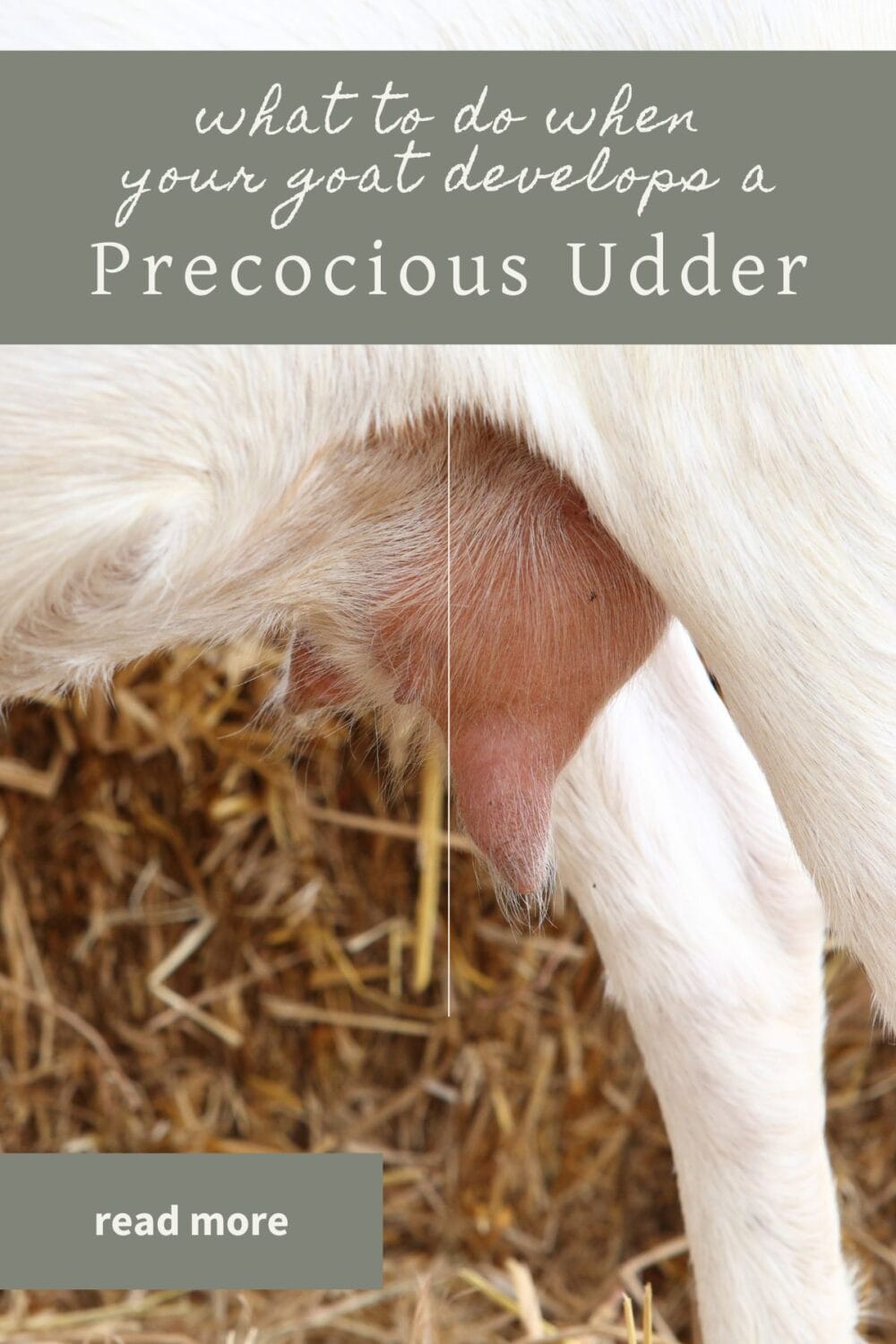What to Do When Your Goat Develops a Precocious Udder
Read on to learn about the causes of precocious udders in goats, the symptoms to look out for, and some ways to manage this condition.

As a goat farmer, you will likely come across a wide range of health and developmental issues. One such condition that often puzzles and sometimes concerns goat owners is the development of a precocious udder.
To help you keep your goats healthy and your homesteading endeavors on track, this post will go into detail about precocious udders in goats, including what they are, why they happen, and how to deal with them.
The Basics: What is a Precocious Udder?
When a doe (female goat) develops an udder before the end of the gestation period or while not pregnant, this is called a precocious udder. All does, from young doelings who have never been bred to older does who are not pregnant at the moment, are capable of developing an udder.
The udder appears swollen, sometimes almost to the size it would be if the doe were genuinely pregnant and nearing delivery.
Causes of a Precocious Udder
A precocious udder can develop in goats for a variety of reasons, including:
- Most often, it is due to an imbalance in the goat’s hormone levels. Goats have a delicate endocrine system that can be disrupted by various factors, leading to unexpected udder development.
- Certain environmental changes, like a sudden change in temperature or exposure to specific chemicals, can simulate the hormonal changes that occur during pregnancy, which in turn trigger the development of the udder.
- Non-pregnant goats’ udders can be stimulated by an excessively rich diet, especially one that is rich in estrogenic plants or compounds.
A few examples of plants that are known to affect hormone balance because of the phytoestrogens they contain are hops, alfalfa, soybeans, red clover, and flaxseed.
- Mastitis (udder inflammation) and tumors are two examples of health issues that can initially look like a precocious udder.
Implications of a Precocious Udder
Precocious udders may appear like a strange anomaly, but they can really affect the goat’s well-being and productivity in several ways:
- Mastitis Risk: It is possible for a doe to develop mastitis if her udder grows too quickly, particularly if she begins to produce milk that is not being expelled frequently.
- Management Challenges: Managing a doe with a precocious udder can be challenging, particularly if milk production begins. Extra attention is needed, such as milking the doe to alleviate pressure and avoid infection.
- Breeding Considerations: A precocious udder might indicate hormonal imbalances that could affect a doe’s fertility and her ability to carry a pregnancy to term.

Managing a Precocious Udder
The following are some things you can do to handle a precocious udder in a herd:
Speak to a Veterinarian or Mentor
If you suspect that your goat has a precocious udder, it is important to consult a veterinarian to confirm the diagnosis and rule out other possible causes. If you are having trouble getting in touch with a vet, a local mentor who has been caring for goats for a while might be a good resource. If you ask these mentors for advice, they may be able to tell you what symptoms need a trip to the vet based on their own experiences.
Optimize Your Goat’s Diet
Diet has a major impact on hormonal balance and general health, so it is necessary to do a thorough assessment of nutrition when dealing with a precocious udder in goats. To make sure the doe is getting all the nutrients she needs without exacerbating her condition, her current diet must be carefully examined. Finding out which plants are estrogenic and eliminating them from the diet is an important first step in preventing hormonal imbalances that can cause udder development.
If you want to make sure your herd stays healthy and avoids precocious udders in the future, it is a good idea to talk to your feed supplier about changing the feed’s composition to promote hormonal balance.
Create a Stress-Free Environment
Environmental factors have a big effect on goats’ health and well-being, causing problems like precocious udder development. To lessen this effect, you should carefully look at and adjust your goats’ living conditions to reduce stress, which can have a big effect on their hormone balance. This includes giving them plenty of room to move around, making sure they have a place to stay out of the weather, and making sure their bedding is always clean and comfortable.
Also, consider any farm chemicals or cleaning products used near the goats. Stop using any products that may be potential chemical triggers that could disrupt their endocrine system.
Care and Monitoring
Effectively managing a goat with a precocious udder requires close observation and quick care. Keep a close eye on the doe for any signs that she is in pain, like changes in her behavior or appetite, as well as physical signs like her udder swelling or turning red, which could mean she has an infection or mastitis.
If the doe starts making milk, you have to milk her regularly, even if she is not nursing her kids. This milking not only takes away the pain from the pressure, but it also greatly lowers the risk of mastitis by keeping the milk from getting stagnant.
Tip: You can freeze the precious colostrum you have to milk out for any kids in need in the future.
Frequently Asked Questions
There is no one-size-fits-all method for homesteaders to raise goats; however, finding the optimal milking technique can be a game-changer. To help you get the most out of your goat milking session, There Are 100 Ways to Milk a Goat – Find the Right Way for You shows you a variety of approaches.
Having a good idea of what to anticipate can make breeding dairy goats much easier. In my post, What to Expect When You are Breeding Your Dairy Goats, I go over all the things you need to do to make sure your goats are healthy and happy while they are being bred. To make sure you are prepared to help your pregnant goat through this important time, What to Expect When Your Goat is Pregnant and Laboring gives a thorough look into the symptoms of labor.
Last but not least, making sure your goats’ udders are healthy is important for their overall health and the milk they produce. Homemade Teat Wash for Goats & Cows introduces a simple, effective recipe for keeping your goats’ teats clean and healthy, preventing infections, and promoting overall udder health. If you are interested in goats and want to learn more about the rewarding hobby, these resources are a great place to start.
If you’ve found value in this blog post and enjoyed reading it, why not share it with your Pinterest community? Pin the image below and spread the love!

Goats can develop a precocious udder for a variety of reasons, including hormonal imbalances, poor diet, and environmental stresses. Despite the potential health risks and management challenges, treatment is possible by understanding the root causes and effects. Homesteaders can guarantee their goats’ health and happiness by taking an active role in their care and seeking advice from qualified goat mentors in their area.
Have you ever dealt with a precocious udder in your goats? Share your experiences and tips for managing this condition in the comments below!

